Andrea Vedaldi
Inductive Visual Localisation: Factorised Training for Superior Generalisation
Jul 21, 2018
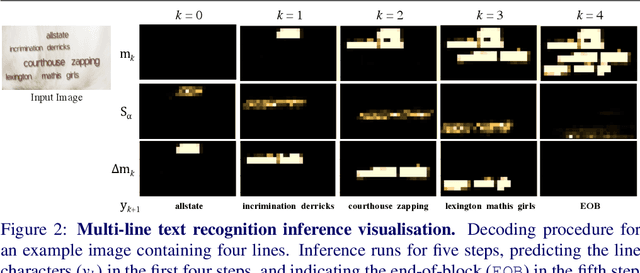
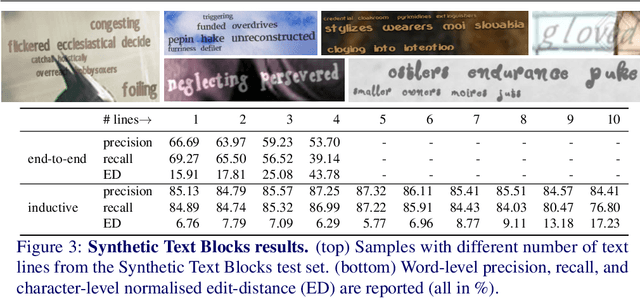
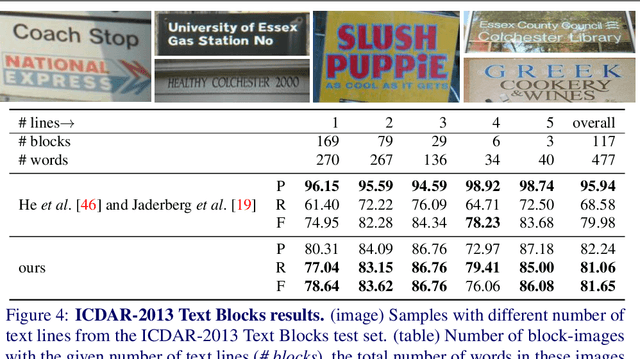
Abstract:End-to-end trained Recurrent Neural Networks (RNNs) have been successfully applied to numerous problems that require processing sequences, such as image captioning, machine translation, and text recognition. However, RNNs often struggle to generalise to sequences longer than the ones encountered during training. In this work, we propose to optimise neural networks explicitly for induction. The idea is to first decompose the problem in a sequence of inductive steps and then to explicitly train the RNN to reproduce such steps. Generalisation is achieved as the RNN is not allowed to learn an arbitrary internal state; instead, it is tasked with mimicking the evolution of a valid state. In particular, the state is restricted to a spatial memory map that tracks parts of the input image which have been accounted for in previous steps. The RNN is trained for single inductive steps, where it produces updates to the memory in addition to the desired output. We evaluate our method on two different visual recognition problems involving visual sequences: (1) text spotting, i.e. joint localisation and reading of text in images containing multiple lines (or a block) of text, and (2) sequential counting of objects in aerial images. We show that inductive training of recurrent models enhances their generalisation ability on challenging image datasets.
Large scale evaluation of local image feature detectors on homography datasets
Jul 20, 2018


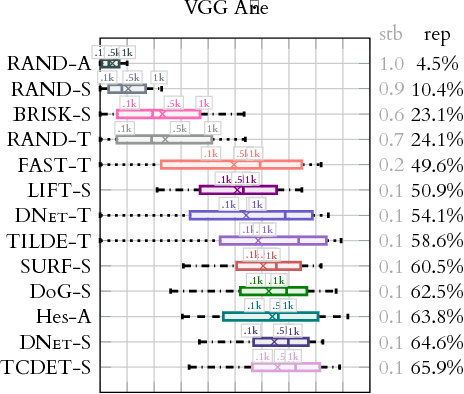
Abstract:We present a large scale benchmark for the evaluation of local feature detectors. Our key innovation is the introduction of a new evaluation protocol which extends and improves the standard detection repeatability measure. The new protocol is better for assessment on a large number of images and reduces the dependency of the results on unwanted distractors such as the number of detected features and the feature magnification factor. Additionally, our protocol provides a comprehensive assessment of the expected performance of detectors under several practical scenarios. Using images from the recently-introduced HPatches dataset, we evaluate a range of state-of-the-art local feature detectors on two main tasks: viewpoint and illumination invariant detection. Contrary to previous detector evaluations, our study contains an order of magnitude more image sequences, resulting in a quantitative evaluation significantly more robust to over-fitting. We also show that traditional detectors are still very competitive when compared to recent deep-learning alternatives.
Cross Pixel Optical Flow Similarity for Self-Supervised Learning
Jul 15, 2018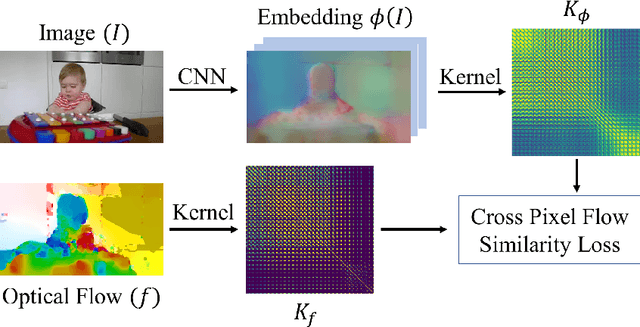
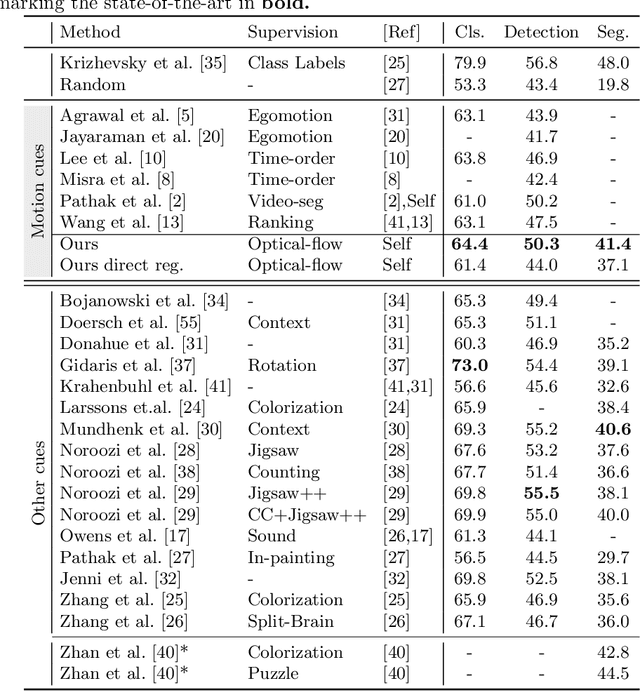
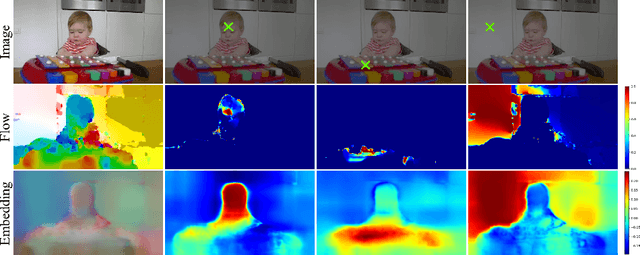
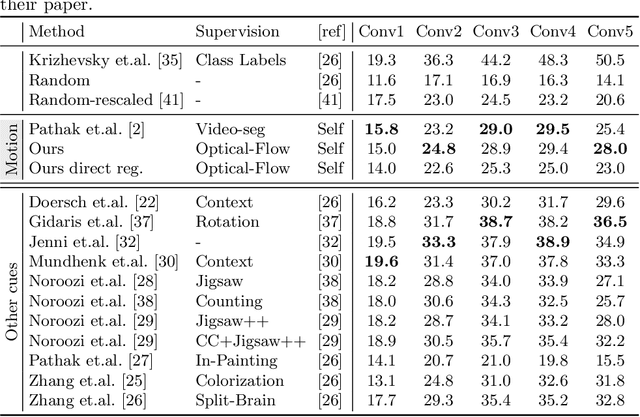
Abstract:We propose a novel method for learning convolutional neural image representations without manual supervision. We use motion cues in the form of optical flow, to supervise representations of static images. The obvious approach of training a network to predict flow from a single image can be needlessly difficult due to intrinsic ambiguities in this prediction task. We instead propose a much simpler learning goal: embed pixels such that the similarity between their embeddings matches that between their optical flow vectors. At test time, the learned deep network can be used without access to video or flow information and transferred to tasks such as image classification, detection, and segmentation. Our method, which significantly simplifies previous attempts at using motion for self-supervision, achieves state-of-the-art results in self-supervision using motion cues, competitive results for self-supervision in general, and is overall state of the art in self-supervised pretraining for semantic image segmentation, as demonstrated on standard benchmarks.
ShapeStacks: Learning Vision-Based Physical Intuition for Generalised Object Stacking
Jul 06, 2018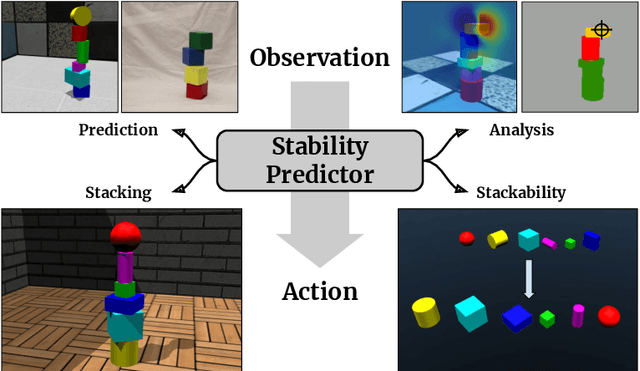
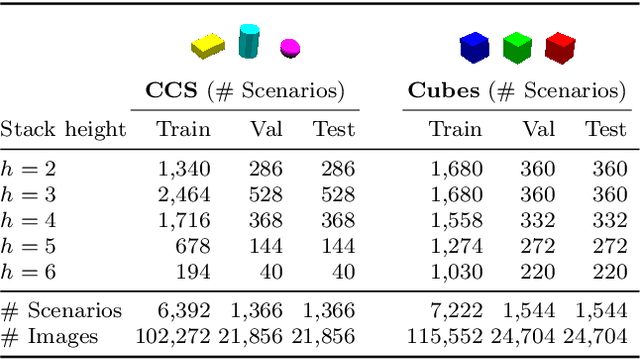
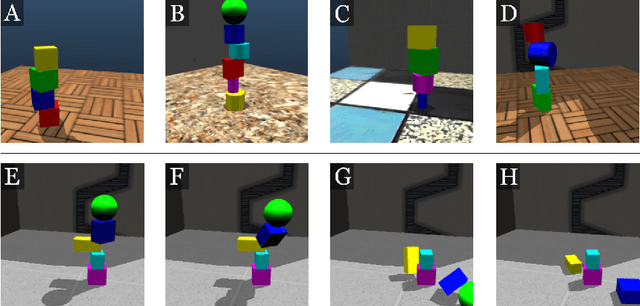
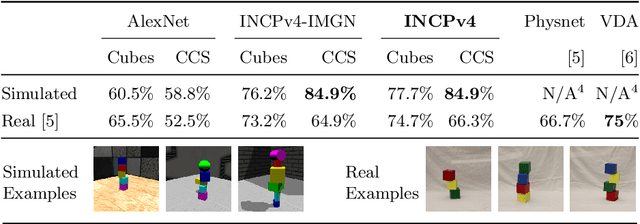
Abstract:Physical intuition is pivotal for intelligent agents to perform complex tasks. In this paper we investigate the passive acquisition of an intuitive understanding of physical principles as well as the active utilisation of this intuition in the context of generalised object stacking. To this end, we provide: a simulation-based dataset featuring 20,000 stack configurations composed of a variety of elementary geometric primitives richly annotated regarding semantics and structural stability. We train visual classifiers for binary stability prediction on the ShapeStacks data and scrutinise their learned physical intuition. Due to the richness of the training data our approach also generalises favourably to real-world scenarios achieving state-of-the-art stability prediction on a publicly available benchmark of block towers. We then leverage the physical intuition learned by our model to actively construct stable stacks and observe the emergence of an intuitive notion of stackability - an inherent object affordance - induced by the active stacking task. Our approach performs well even in challenging conditions where it considerably exceeds the stack height observed during training or in cases where initially unstable structures must be stabilised via counterbalancing.
Conditional Image Generation for Learning the Structure of Visual Objects
Jun 20, 2018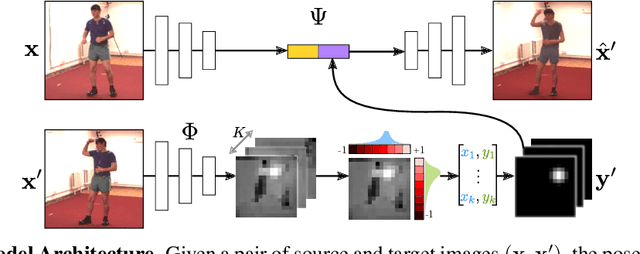
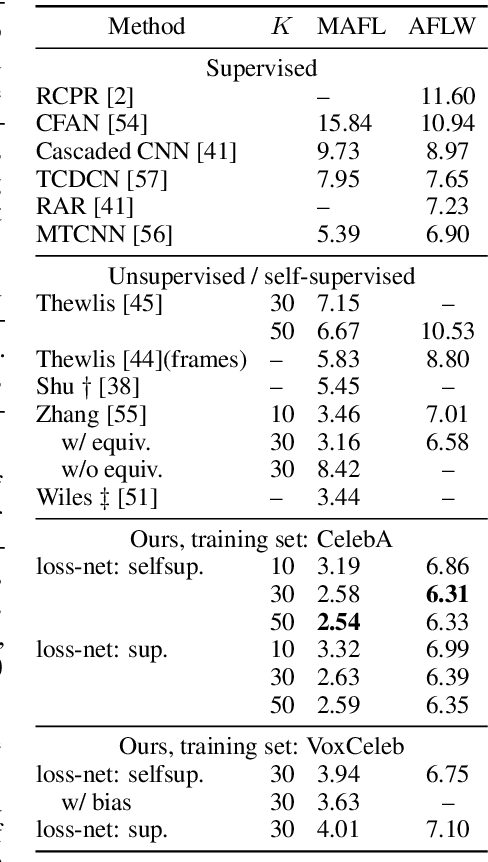
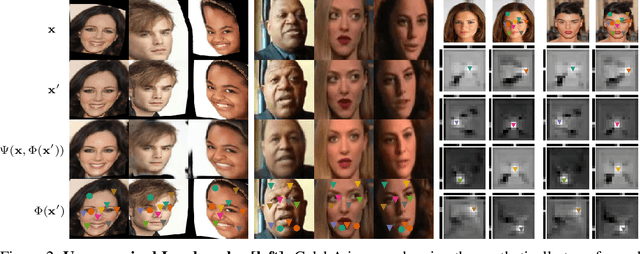

Abstract:In this paper, we consider the problem of learning landmarks for object categories without any manual annotations. We cast this as the problem of conditionally generating an image of an object from another one, where the images differ by acquisition time and/or viewpoint. The process is aided by providing the generator with a keypoint-like representation extracted from the target image through a tight bottleneck. This encourages the representation to distil information about the object geometry, which changes from source to target, while the appearance, which is shared between the source and target, is read off from the source alone. Conditioning simplifies the generation task significantly, to the point that adopting a simple perceptual loss instead of more sophisticated approaches such as adversarial training is sufficient to learn landmarks. We show that our method is applicable to a large variety of datasets - faces, people, 3D objects, and digits - without any modifications. We further demonstrate that we can learn landmarks from synthetic image deformations or videos, all without manual supervision, while outperforming state-of-the-art unsupervised landmark detectors.
Neural Stethoscopes: Unifying Analytic, Auxiliary and Adversarial Network Probing
Jun 15, 2018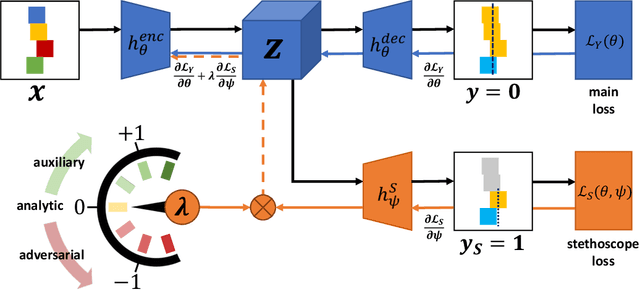
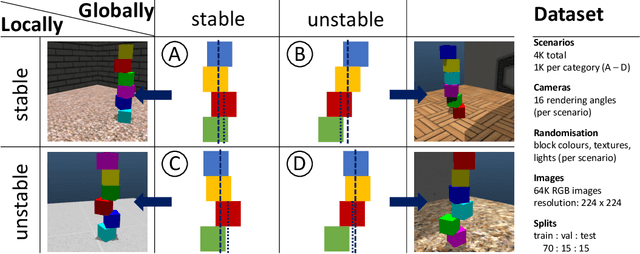


Abstract:Model interpretability and systematic, targeted model adaptation present central tenets in machine learning for addressing limited or biased datasets. In this paper, we introduce neural stethoscopes as a framework for quantifying the degree of importance of specific factors of influence in deep networks as well as for actively promoting and suppressing information as appropriate. In doing so we unify concepts from multitask learning as well as training with auxiliary and adversarial losses. We showcase the efficacy of neural stethoscopes in an intuitive physics domain. Specifically, we investigate the challenge of visually predicting stability of block towers and demonstrate that the network uses visual cues which makes it susceptible to biases in the dataset. Through the use of stethoscopes we interrogate the accessibility of specific information throughout the network stack and show that we are able to actively de-bias network predictions as well as enhance performance via suitable auxiliary and adversarial stethoscope losses.
Meta-learning with differentiable closed-form solvers
May 21, 2018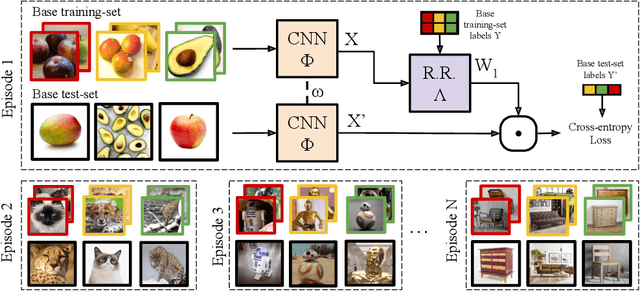
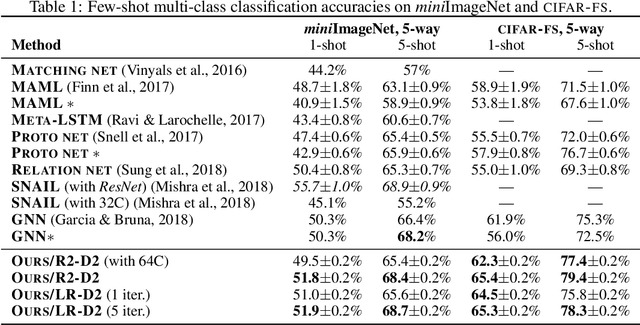

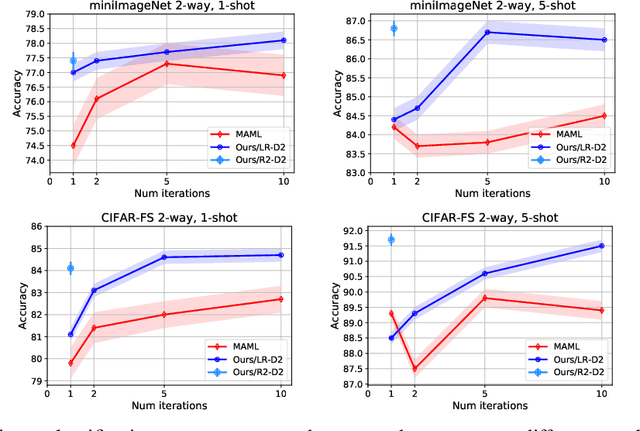
Abstract:Adapting deep networks to new concepts from few examples is extremely challenging, due to the high computational and data requirements of standard fine-tuning procedures. Most works on meta-learning and few-shot learning have thus focused on simple learning techniques for adaptation, such as nearest neighbors or gradient descent. Nonetheless, the machine learning literature contains a wealth of methods that learn non-deep models very efficiently. In this work we propose to use these fast convergent methods as the main adaptation mechanism for few-shot learning. The main idea is to teach a deep network to use standard machine learning tools, such as logistic regression, as part of its own internal model, enabling it to quickly adapt to novel tasks. This requires back-propagating errors through the solver steps. While normally the matrix operations involved would be costly, the small number of examples works to our advantage, by making use of the Woodbury identity. We propose both iterative and closed-form solvers, based on logistic regression and ridge regression components. Our methods achieve excellent performance on three few-shot learning benchmarks, showing competitive performance on Omniglot and surpassing all state-of-the-art alternatives on miniImageNet and CIFAR-100.
Small steps and giant leaps: Minimal Newton solvers for Deep Learning
May 21, 2018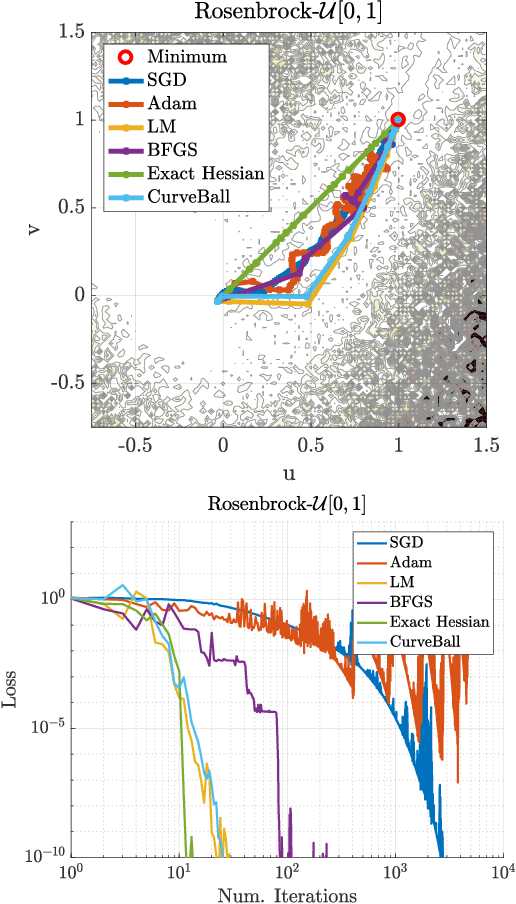
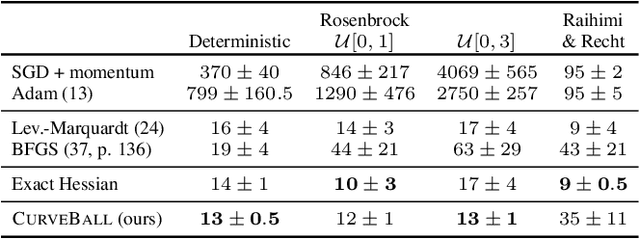
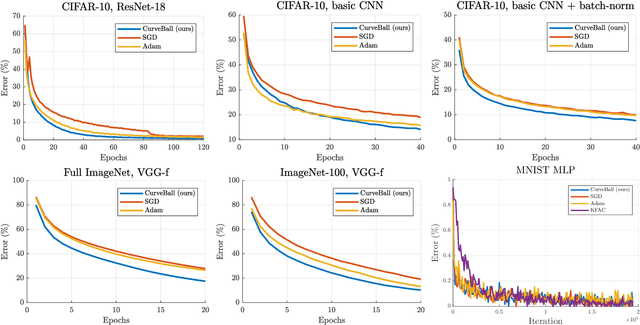

Abstract:We propose a fast second-order method that can be used as a drop-in replacement for current deep learning solvers. Compared to stochastic gradient descent (SGD), it only requires two additional forward-mode automatic differentiation operations per iteration, which has a computational cost comparable to two standard forward passes and is easy to implement. Our method addresses long-standing issues with current second-order solvers, which invert an approximate Hessian matrix every iteration exactly or by conjugate-gradient methods, a procedure that is both costly and sensitive to noise. Instead, we propose to keep a single estimate of the gradient projected by the inverse Hessian matrix, and update it once per iteration. This estimate has the same size and is similar to the momentum variable that is commonly used in SGD. No estimate of the Hessian is maintained. We first validate our method, called CurveBall, on small problems with known closed-form solutions (noisy Rosenbrock function and degenerate 2-layer linear networks), where current deep learning solvers seem to struggle. We then train several large models on CIFAR and ImageNet, including ResNet and VGG-f networks, where we demonstrate faster convergence with no hyperparameter tuning. Code is available.
Unsupervised Intuitive Physics from Visual Observations
May 14, 2018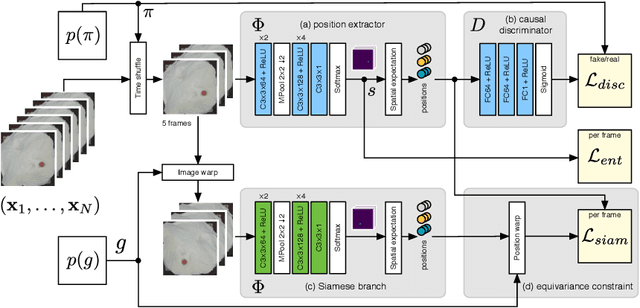

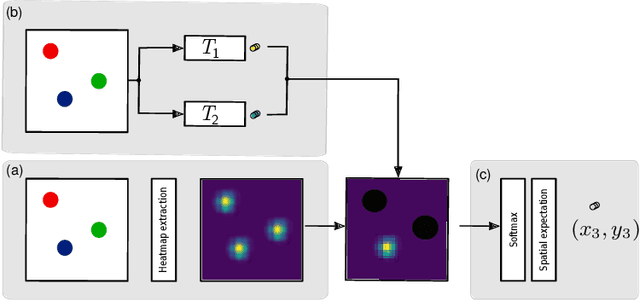
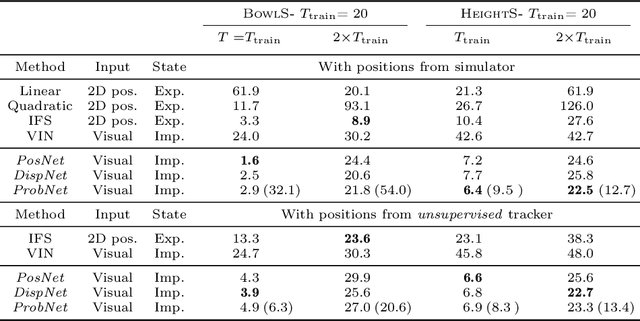
Abstract:While learning models of intuitive physics is an increasingly active area of research, current approaches still fall short of natural intelligences in one important regard: they require external supervision, such as explicit access to physical states, at training and sometimes even at test times. Some authors have relaxed such requirements by supplementing the model with an handcrafted physical simulator. Still, the resulting methods are unable to automatically learn new complex environments and to understand physical interactions within them. In this work, we demonstrated for the first time learning such predictors directly from raw visual observations and without relying on simulators. We do so in two steps: first, we learn to track mechanically-salient objects in videos using causality and equivariance, two unsupervised learning principles that do not require auto-encoding. Second, we demonstrate that the extracted positions are sufficient to successfully train visual motion predictors that can take the underlying environment into account. We validate our predictors on synthetic datasets; then, we introduce a new dataset, ROLL4REAL, consisting of real objects rolling on complex terrains (pool table, elliptical bowl, and random height-field). We show that in all such cases it is possible to learn reliable extrapolators of the object trajectories from raw videos alone, without any form of external supervision and with no more prior knowledge than the choice of a convolutional neural network architecture.
Warped Convolutions: Efficient Invariance to Spatial Transformations
Apr 18, 2018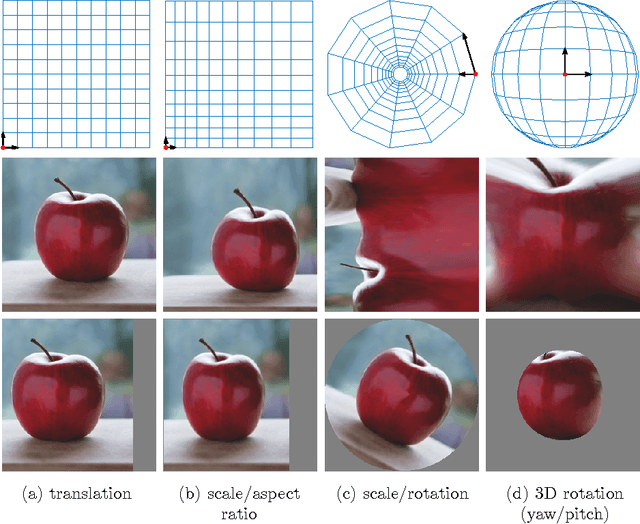



Abstract:Convolutional Neural Networks (CNNs) are extremely efficient, since they exploit the inherent translation-invariance of natural images. However, translation is just one of a myriad of useful spatial transformations. Can the same efficiency be attained when considering other spatial invariances? Such generalized convolutions have been considered in the past, but at a high computational cost. We present a construction that is simple and exact, yet has the same computational complexity that standard convolutions enjoy. It consists of a constant image warp followed by a simple convolution, which are standard blocks in deep learning toolboxes. With a carefully crafted warp, the resulting architecture can be made equivariant to a wide range of two-parameter spatial transformations. We show encouraging results in realistic scenarios, including the estimation of vehicle poses in the Google Earth dataset (rotation and scale), and face poses in Annotated Facial Landmarks in the Wild (3D rotations under perspective).
 Add to Chrome
Add to Chrome Add to Firefox
Add to Firefox Add to Edge
Add to Edge